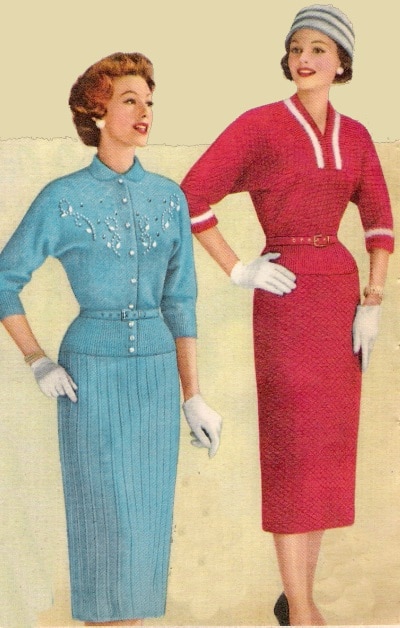
During the twentieth century, wearing gloves was a necessity rather than a fashion statement. While in contemporary times today, individuals wear gloves to complement their outfits, rather than the sole need to wear gloves. Wearing gloves was embedded in their everyday fashion, as it was a necessity to wear it every time one leaves the house. The world wars added to the reduction of the usage of gloves and bringing about new opportunities that opened new doors for women.
Vintage gloves serve many significant purposes – establishing women’s role in society. Wearing gloves was essentially a sign of hygiene and healthy living. It is a two-way fold in protecting oneself from catching illnesses and preventing the transmission of diseases.
Due to the contribution of the war, this opened many doors for new fashion statements, hence, introducing new trends and opportunities for women.
Vintage Gloves with Purpose
Vintage gloves serve many significant purposes – establishing women’s role in society. Wearing gloves was essentially a sign of hygiene and healthy living. It is a two-way fold in protecting oneself from catching illnesses and preventing the transmission of diseases.
In the case of most, however, women wore gloves for the purpose of hiding their social class. Women from the upper classes are associated with beauty: it was pale and smooth. Women who are in the lower classes, usually working women, however, often had scars on their hands – rough wounds. She would wear gloves to hide her social class and to hopefully elevate to an upper social class and to hide her insecurities.
Women wore gloves to hide their faults and to hopefully elevate herself into a better society. She was able to climb the social ladder if she pretended to fit a higher social status. She was able to blend in with both social classes – hence, crafting her own identity. As identity plays the main role in establishing a woman’s credibility, it was tailored and crafted to benefit women.
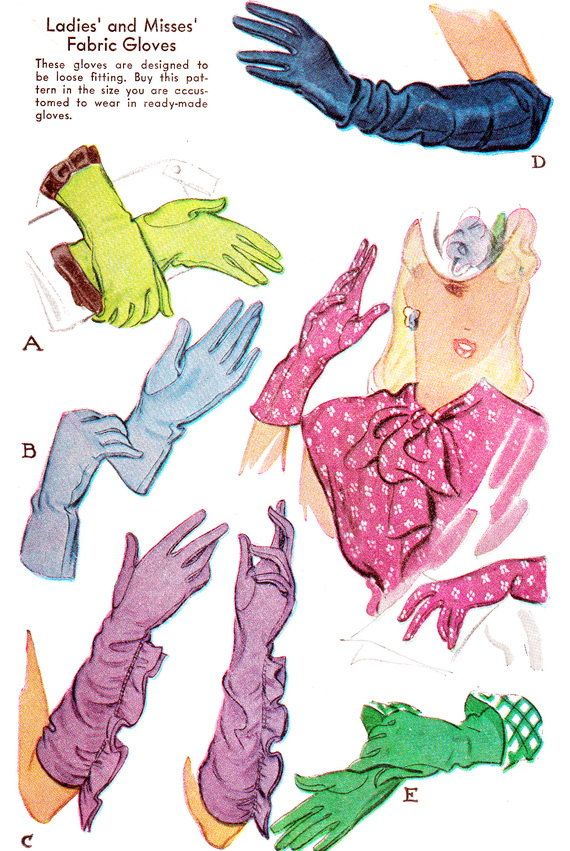
As the twenties was also an era filled with emerging diseases that was known to be fatal, it was also difficult to find access to healthcare. Most people in the lower classes suffered as they lacked opportunities for healthcare. However, upper classes feared the possibility of catching such diseases, hence, resorting to vintage gloves for protection. They wore it both at home and in public places as a means for preventative measures.
As mentioned above, Vintage gloves serve many significant purposes – establishing women’s role in society. Wearing gloves was essentially a sign of hygiene and healthy living. It is a two-way fold in protecting oneself from catching illnesses and preventing the transmission of diseases.
As the twenties were also an era filled with emerging diseases that were known to be fatal, it was also difficult to find access to healthcare. gloves became a necessity in every household. It served as a method of prevention and it was a key fundamental tool for protection and to enhance a healthier way of living.
Finally, in an era where people took pride in dressing modestly, gloves were a key concept. Gloves were associated as modesty – women who wore gloves were taken more seriously than others. It was the sole factor in distinguishing whether they were honorable in society. Gloves were leeway for people to cover up easily. For example, swimwear was prohibited by most during the roaring twenties.
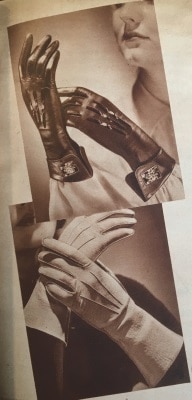
As swimwear became shorter, too much bare skin could result in fines and even interestingly, being sent to jail. What a revelation to today’s swimwear. Most of these rules were lifted by the late twenties and women were allowed to wear whatever piece of clothing that they desired. This was the society that they built and had to follow. These traditions and customs mirrored their way of living in an era where social classes were made prominent.
Gloves were somewhat similar to stockings. Relating these two prominent choices of dress wear, even stockings were worn to the beach! With flippers and flip-flops of this era in contemporary today, women wore stockings to the beach. This presented a new avenue for women’s fashion.
Finally, gloves are representative of the society of that era. To bare skin was shocking and provocative. It was simply not lady-like. When women wore short-sleeved dresses, gloves were a necessity to cover up the bare parts of the skin. Gloves were associated as modesty – women who wore gloves were taken more seriously than others.
In this article, I will be exploring the evolution of vintage gloves from the 1900-1940s.
1900-1910s Gloves
In the early 1900s, vintage gloves were a necessity. It was worn anywhere and everywhere. As mentioned above, the length of gloves was utilized based on the length of her other pieces of clothing. It is used as a piece of compensation to ultimately reduce the visibility of one’s bare skin to present a modest figure.
Popular colors were tan, brown, black, white, red, green. These colors were picked based on the need to compliment her other pieces of clothing. Hence, depending on her other pieces of clothing, the color of her gloves will be chosen. This ultimately depends on whether an individual is cautious of her style, or if she just wanted to wear gloves because society mentions it. This will depend on the intentions of women, and what they choose to inhibit in their fashion. During the evening, usually, longer gloves were needed, reaching all the way to one’s biceps. Gloves did not mean just covering the circumference of one’s palm, it reached all the way to the biceps. Can you imagine just how uncomfortable it would be! It was simply a necessity due to preventative purposes but they could not even remove it even if they wished to do so.
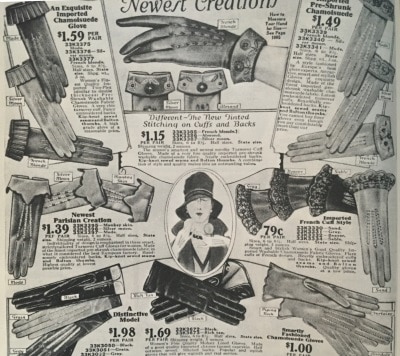
The emergence of pastel colors was slowly incorporated into the style of gloves, especially during contemporary today. Gloves were sized based on the circumference of her palm, and adjusted according to that. It was seen as fitting and tiny.
A sign to women’s low working class was that some women had oddly shaped arms due to working. This meant that the gloves would not fit her perfectly and it has an odd shape overall, noting her position in society.
When WW1 hit, however, supplies of leather went to the war effort and the prices of gloves rose. As the prices went up, most people were reluctant to purchase gloves, hence, the slow decline of supplies for gloves as witnessed in the roaring twenties. Fewer people wanted to incorporate gloves into their fashion.
1910-1920s Gloves
The roaring twenties also presented an era where vintage gloves stayed and are still timeless. After the war, women still continued to wear these gloves.
However, wearing gloves was seeing a declining trend – most people resorted to only wearing short gloves, or none at all. Gloves were hardly worn beside the purpose of fashion. During winter, women wore warmer leather or knit gloves.
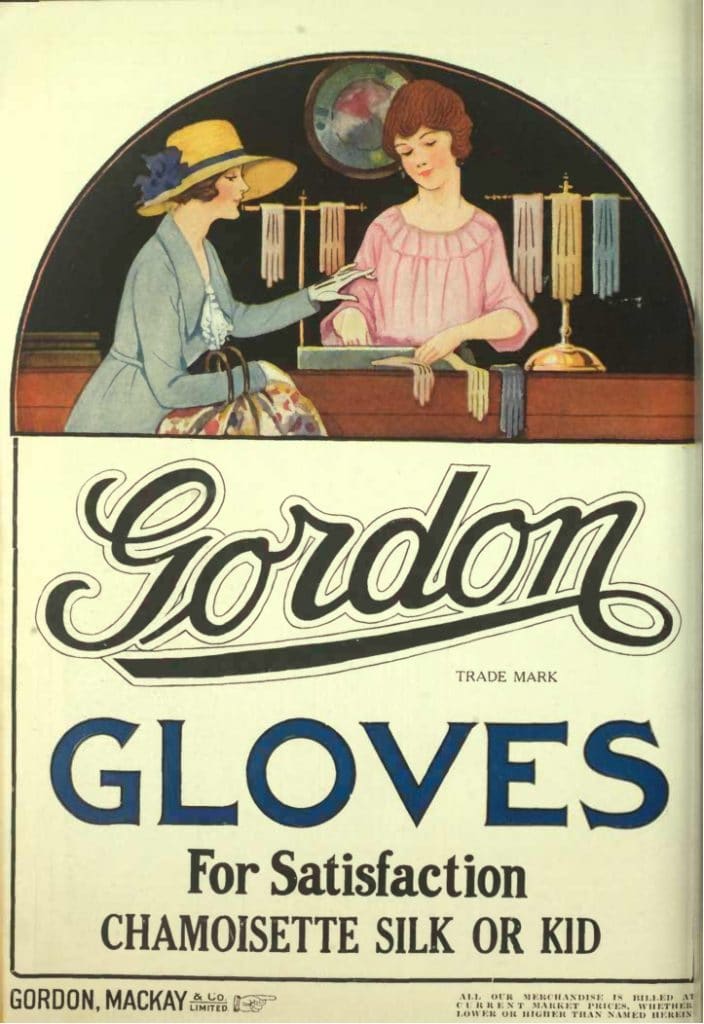
We witnessed a complete transformation of gloves – from having to wear it every day to now, not at all. Vintage gloves, however, stayed very plain as seen in the 1900s-1910s. As mentioned previously during the 1910s, popular colors were tan, brown, black, white, red, green. These colors were picked based on the need to compliment her other pieces of clothing. Hence, depending on her other pieces of clothing, the color of her gloves will be chosen.
However, as the gloves were mostly in solid colors during the 1910s, women incorporated more geometric patterns and embroideries to the gloves. The cuffs were decorated with embroidered – lace edgings and designs. There were newer and an extensive collection of gloves that were slowly introduced.
1920-1930s Gloves
After the roaring twenties, it presented a very unusual style (a style that was deemed unusual if witnessed in the earlier eras).
They took pride in showing more bare skin – especially during evening occasions. The attire presented more outlook into showing their bare skin – while certain exceptions were given.
Leather gloves continued to have their place especially for more dressy occasions or sports and city-life. This presented a lifestyle that was praised and liked by most women during the era.
For working women, they took pride in wearing cotton or fabric gloves that were used for more practical purposes.
Less fancy gloves were shorter in length and had little-to-no decorations. While vintage gloves in the 1930s did not need to match their dresses, this was interesting as in the earlier eras, women were told to always match their dresses with their gloves.
As mentioned before, during the contemporary past, individuals wear gloves to complement their outfits and for the sole need to wear gloves. Wearing gloves was embedded in their everyday fashion, as it was a necessity to wear it every time one leaves the house.
Vintage Style Gloves
Presenting a more authentic outlook of the vintage style gloves, you can shop here for new vintage inspired gloves in all lengths and colors: Amazon.
If you are looking for the gloves from the earlier eras – such as the longer ones that covered one’s biceps, you can surely find it! The prices range from more affordable ones to more intricate ones with heightened prices.
Choose your options and buy it!
The options are endless and you have the opportunity to take hold of each and every possible outfit that you want to wear and for each occasion!
Conclusion
Ultimately, during the twentieth century, wearing gloves was a necessity rather than a fashion statement.
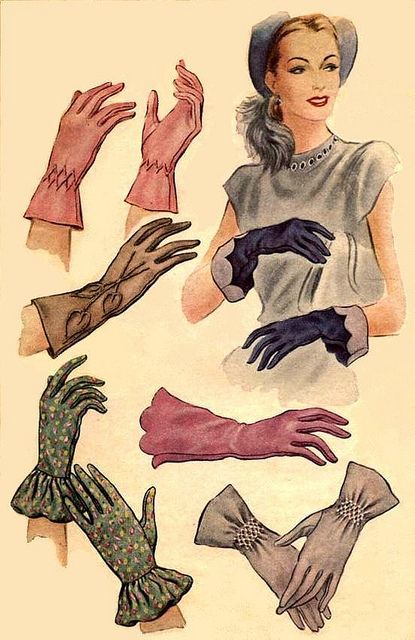
Vintage gloves serve many significant purposes – establishing women’s role in society. Wearing gloves was essentially a sign of hygiene and healthy living. It is a two-way fold in protecting oneself from catching illnesses and preventing the transmission of diseases.
There were many purposes for wearing gloves. As the twenties were also an era filled with unknown diseases, it was also difficult to find access to healthcare. However, upper classes feared the possibility of catching such diseases, hence, resorting to vintage gloves for protection. They wore it in the public as well as in households sometimes – while cleaning. With the heightened diaspora for the fear of getting sick, gloves became a necessity in every household. It served as a method of prevention and it was a key fundamental tool for protection and to enhance a healthier way of living.
We have discussed the evolution of gloves from the 1900s to-1930s.In the early 1900s, vintage gloves were a necessity. It was worn anywhere and everywhere. As mentioned above, the length of gloves was utilized based on the length of her other pieces of clothing. It is used as a piece of compensation to ultimately, reduce the visibility of one’s bare skin. In the 1920s however, wearing gloves was seeing a declining trend – most people resorted to only wearing short gloves or none at all. Can you imagine having to wear gloves every time you left the house? Even in warmer climates? Understandably, gloves are worn during winter to protect your fingers from freezing. No, women in the 1920s objected to this claim (Well, most women!). After the roaring twenties, it presented a very unusual style (a style that was deemed unusual if witnessed in the earlier eras).
They took pride in showing more bare skin – especially during evening occasions. The attire presented more outlook into showing their bare skin – while certain exceptions were given.
As swimwear became shorter, too much bare skin could result in fines and even interestingly, being sent to jail. What a revelation to today’s swimwear. Most of these rules were lifted by the late twenties and women were allowed to wear whatever piece of clothing that they desired. This was the society that they built and had to follow. These traditions and customs mirrored their way of living in an era where social classes were made prominent.
In conclusion, The roaring twenties was a golden era of fashion: it was the epitome of the new modern age fashion. As a result of WW1, women were left with a comfortable lifestyle – even gloves were disposed of or worn minimally in the roaring twenties.1920s women embraced their carefree and lively manner which is easily represented by their choice of clothing. As a result, this enabled them to pursue new identities and opened new doors for the rise of women’s rights.

